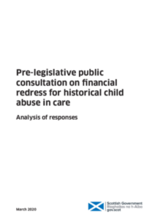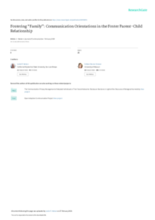Displaying 471 - 480 of 2214
This study examines the effects of child welfare, mental health, and drug/alcohol system experiences on jail involvement, as mediated by juvenile justice placement, for Black and White youth/young adults.
This paper from the Children and Youth Services Review reflects on the collective participation of young people in care in a rights-based initiative intended to facilitate input into service and policy development in Ireland.
The aim of this study is to explore the experiences of former unaccompanied refugee children and unaccompanied refugee children, their carers and social workers with regard to the foster placement.
This article explores contemporary Muslim Americans’ negotiations of Islamic law to find ethical ways to care for non-biological children within their household.
The aims of this article were to identify the types and characteristics of social support for families in vulnerable situations and to analyze what elements influence families’ attitudes towards these supports.
In this article journalist Mykeala Campanini explores why a majority of children in out-of-home care (OOHC) in Australia are struggling to reach national literacy and numeracy benchmarks, which puts them at risk of becoming disengaged with schooling, resulting in lifelong disadvantage.
This report presents findings from an independent analysis of the responses to a public consultation issued by the Scottish Government in September 2019, which invited views on its specific proposals for the establishment of a statutory financial redress scheme for victims / survivors of abuse in care.
This article presents the findings of the qualitative study on the personal change of foster parents carried out in Lithuania, which reveals the subjective experience of informal learning of the foster parents fostering a non-relative child.
The present study investigated the relationship of current foster parents’ communication with his/her foster child on foster parents’ perceptions of relational and child well-being.
In this pilot study, sixteen youth between ages 18 and 20 participated in semi-structured interviews, support mapping, and resiliency measurements to gather the experiences of the transition from foster care.



